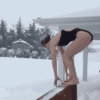Progress:
I've started doing the wiring for the helmet. I've done up the fans (yes two this time) and I'm most of the way through the lights. I'm going to write up some steps for the LEDs, but not the fan. Some experienced people have told me that my voltage/wiring is off on my fan so I won't pass that false information along. But, it runs for 3+ hours for me on a 9volt battery and that is good enough for me.
The LED wiring on the other hand is pretty simple and this should give you the basic run down of how to do soldering.
Steps to soldering LEDs
Things you'll need (product links will be in my first post):
(4) 5mm LED lights w/resistors, your color choice
(4) 5mm LED light holders
(1) Battery connector, I'll be using 9volt
(1) Battery
(1) On/Off Switch
0.7 or smaller Solid Wire in Red and Black, about 2 feet.
1/8" Heat Shrink Tubing, easier to use than electrical tape
(1) Soldering gun
a small coil of Rosen-Core Solder
Flux, optional
1. You'll need to make sure your lights have resistors. Resistors helps reduce the amount of energy each light gets so that they don't burn out instantly. The bigger the resistor the less the light will illuminate. You can buy them pre wired to resitors or you can buy them in bulk with resistors included. Many of these lights will be shining in people's eyes so I recommend a small resistor on each LED.
1a. The resistor goes on the positive lead of the LED. The
positive lead is going to be the
longer of the two wires coming out of the light. With the resistors on you can touch each light directly to the battery to test that the lights work.
2. You need to make a circuit from the LED to the Battery, positive to positive (red wires), negative to negative (black wires).
2a. The circuit will only be interrupted by the switch. The switch needs to be along the positive line, whether it is up or down is not important.
3. Once you have the idea of how you want your circuit (ie the length of wires, the positioning of the lights, battery and switch) you will need to solder them together. Soldering is heating up additional metal to the point of melting, adding it to something else and when it dries it hardens and makes something more solid. In this case we will use it to connect two wires together.
3a. Start by stripping off the outer casing of the wires about 3/4" of an inch from the edge. It helps to twist the two wires together to make it easier to hold while soldering together. Keep in mind if you are making a straight line with the two wires or a coming together at a V.
Here's what doing a straight line would look like:
The rest of this example is going to be a V shaped weld.
3b. This is a step I always forget...
put the heat shrink tube on the wire, but away from where you will be heating. Once you're done soldering there is often
no way to put the tubing on, so you must do it first.
3c.Spread some
flux on the two wires, not a lot is needed. Flux does two things, it helps clean the metal off making your solder hold better and it helps the wires heat up faster to melt the solder.
3d. After your soldering gun has been heating up for a minute,
touch the solder tip to the wires we're connecting. After 20-30 seconds the gun will have made the wire so hot that when you
touch the Rosen-Core Solder to the wires it will melt like butter. You can also touch the solder to the solder gun tip, this is okay just a messier way of doing it.
3e.
Keeping the soldering gun tip held against the wire, move the solder wire up and down the two wires. It will melt and fill in the spaces between the two wires. Once you let the heat of the gun off the wire it will begin to cool and harden in under a minute. Be careful not to make sudden movements with the wires covered in melted metal as they can easily fling tiny balls of molten metal at you.
3f. Slide the heat shrink tubing, that you previously put on, up to cover the exposed wire. Heat with a lighter quickly and evenlying to shrink the tube.
4. Step 3 told you how to solder, now I'm going to tell you what to solder.
4a. Each side of the helmet usually has two lights. First solder all four resistors to all four positive leads (longer wire) of the LEDs. Direction of resistor is not critical.
4b. Now consolidate wires by soldering two leds together for each side. I never have good luck soldering the resistors directly together or the negatives from the LED directly together. So what I do is cut four short black wires and four short red wires to extend the lines out further before soldering them together.
4c. That was confusing.
Here's a picture:
4d. Solder separately the positive and negative from each side into a single wire (one red, one black).
The black one can now be soldered directly to the black line of the battering connector.
4e.
The red one needs more wire so that it can first
go to the switch. Then
go from the switch to the red battery connector wire.
Here's the pieces laid out like a diagram:
5. Flip the switch and hope for the best!!
5a. Don't get discouraged if it doesn't, check all your connections and soldering to make sure nothing is loose. If everything still looks good, but not working, then get new lights and start over.












